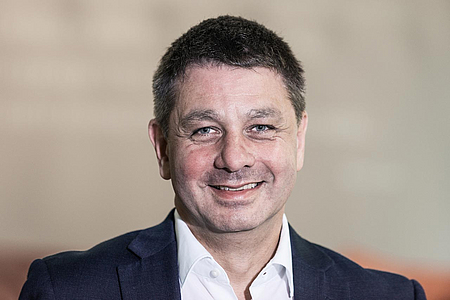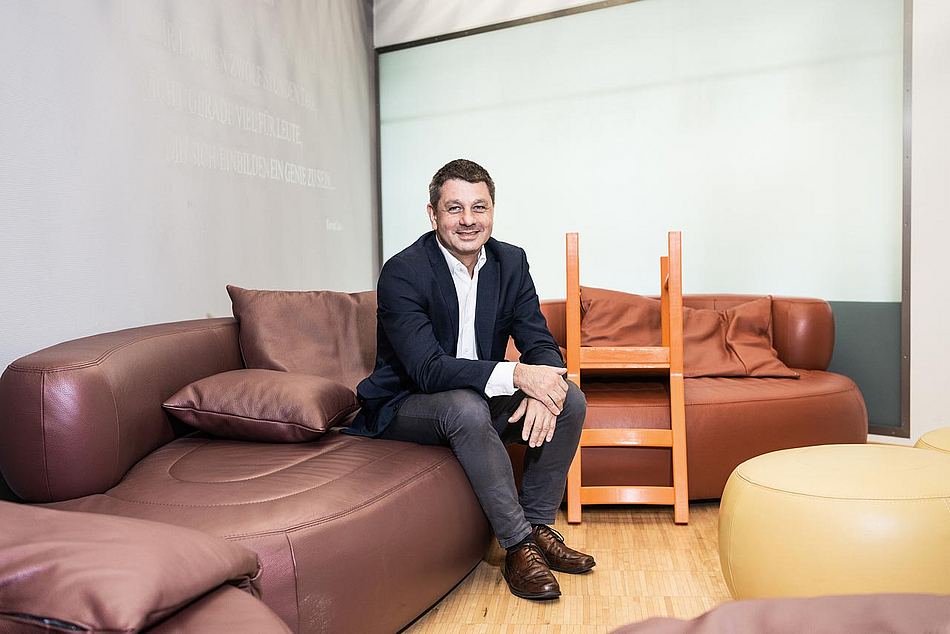Detective work on the operating table
Andrej Trampuz is head of the still relatively new Department of Septic Surgery at the Center for Musculoskeletal Surgery of the Charité. Within the framework of his BIH Clinical Fellowship funded by Stiftung Charité, he’s analyzing the data and samples collected on the ward from 2013 to 2015. The aim is to thereby gain new insights concerning septic surgery and improve the clinical work of the Center:
Dr. Trampuz, what brought you to the Charité?
Before I came to the Charité, I worked in Switzerland for 15 years and was interested in the field of tropical medicine. So, among other things, I went to a hospital in Zambia for six months. There, I learned a great deal, but back in Switzerland tropical medicine mainly consisted of vaccinations for people who wanted to travel – which I didn’t find very exciting. On the other hand, here too, infections in the case of implants do cause huge problems for us, as implants are used very often – whether a shunt, a pacemaker, a catheter or joints. So that’s how infections from foreign material have developed into my new specialist field.
I trained in Switzerland and Slovenia as a specialist in internal medicine and infectious diseases. However, in Germany there is no specialist medical training in infectiology, and many aspects are covered by other specializations, particularly by internists. Unfortunately, the result is that few doctors are concerned with the issue of surgical infections, even though these often occur. The surgeons at the Charité have understood this, and therefore created the new Septic Surgery ward, and thus my job, four years ago.
What’s new about Septic Surgery?
We’re experts in infections that arise in connection with surgical interventions. The special feature of our ward is that all the patients are looked after by both a surgeon and an internist who is specialized in infections. By that, I don’t just mean collaborating on paper, but having joint talks together with the patients. This allows all their questions to be answered by the respective experts. As a rule, three to four doctors are responsible for one patient, thanks to which we markedly improve treatment success. This not only increases patients’ life quality but also makes it possible to reduce the subsequent costs for the health system. Our concept can be applied to all types of surgical intervention and there is a corresponding need for it at the Charité. There is also still a great need for evaluation and research in this field, so that from the start we’ve expanded a lot and have meanwhile built up a team of 21 people. However, most of those posts are externally financed and we have to find a way to perpetuate that financing. I’d like to see the special value of this structure being recognized, safeguarded and developed further – particularly with regard to the combination of infections with fields other than surgery.
So, what prompted you to take the step from the clinic to research?
I’d always enjoyed translational research: discovering problems at the clinic, taking them to the lab to find a solution – and then bringing the solution back to the patient.

Funding program
BIH Clinical Fellows
Funding period
2015 – 2017
Project title
Analyse von Daten und Patientenproben zu komplexen Infektionen des Bewegungs-apparates
Research areas
Infectiology, orthopedics, trauma surgery
Institution
Charité – Universitätsmedizin Berlin
Since 2013
Head of the Department of Septic Surgery at the Center for Musculoskeletal Surgery (CMSC) of the Charité – Universitätsmedizin Berlin
Since 2013
Founder of the foundation PRO-IMPLANT
2001 – 2004
Post-Doc at the Mayo Clinic, Rochester, Minnesota, USA
In this way, we developed new methods – for example, a diagnostic method called sonication. Here, you use an ultrasonic bath, such as every clinic has for cleaning surgical devices. We then place the implant removed from the body into it. This enables us to identify the bacteria that otherwise cling to the implant as a biofilm. It’s then possible to specifically design the therapy to combat these bacteria. At the moment, we’re researching bacteriophages – i.e. viruses that only infect bacteria. We’re thus using the nature’s weapon against our opponent and only eliminating the bacteria. This doesn’t damage the body’s own cells and hardly ever produces side effects or resistances.
What do you enjoy most about doing research?
I really enjoy doing detective work: finding out what someone’s problem is and how to cure it. For me, it’s important to not rely only on lab results and imaging, but to talk with patients. The patients are in fact the special aspect of my profession. But over the past few years, I’ve also grown to love teaching more and more. It’s nice to see how steep the learning curve is for the young doctors.
But there must certainly be challenges too?
In research, it’s a fact that a large part of it doesn’t work. This is something one simply has to live with and accept. The important thing is to make good use of the part that works in order to make progress and to view things from a long-term perspective. I try to convey this to young researchers when their research doesn’t yield the hoped-for results. I also think it’s important to work together in a team. You help others, but also receive help in return – that’s the only way to make any progress.
December 2017 / MM
